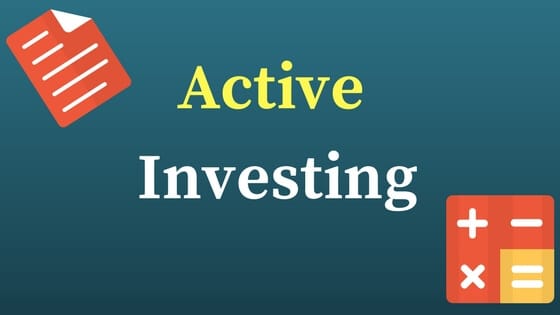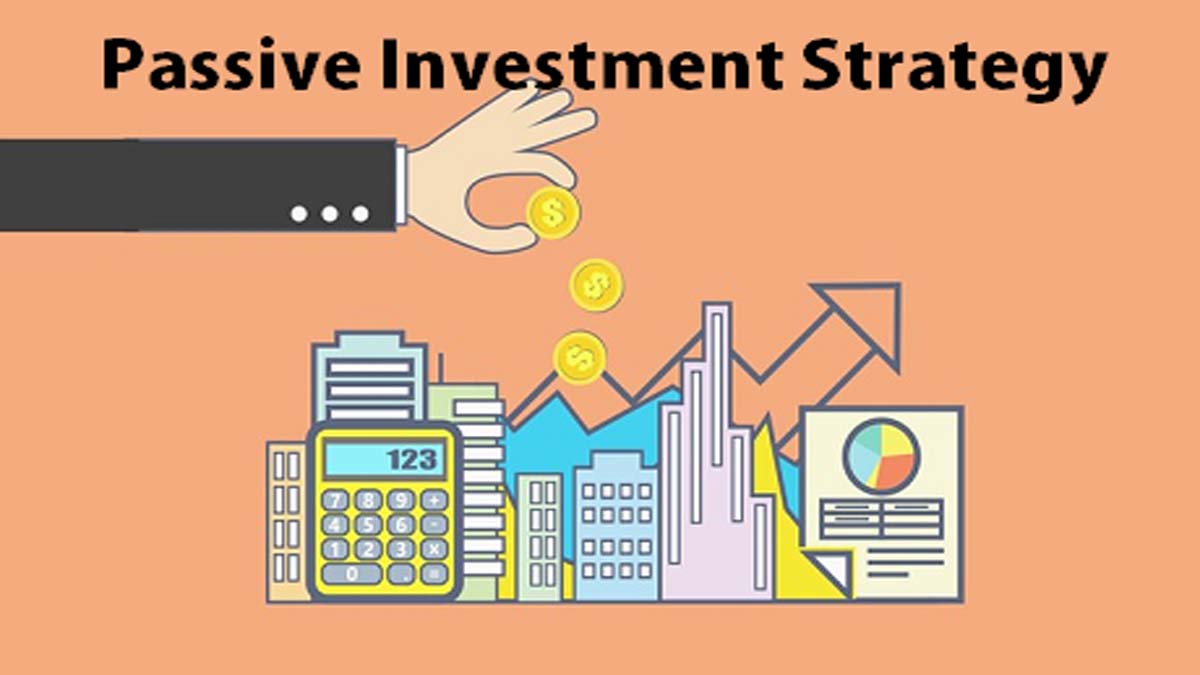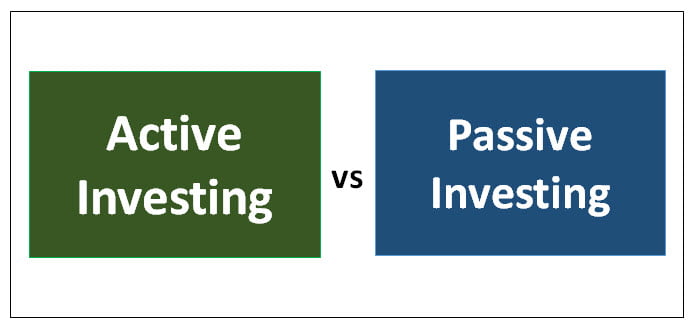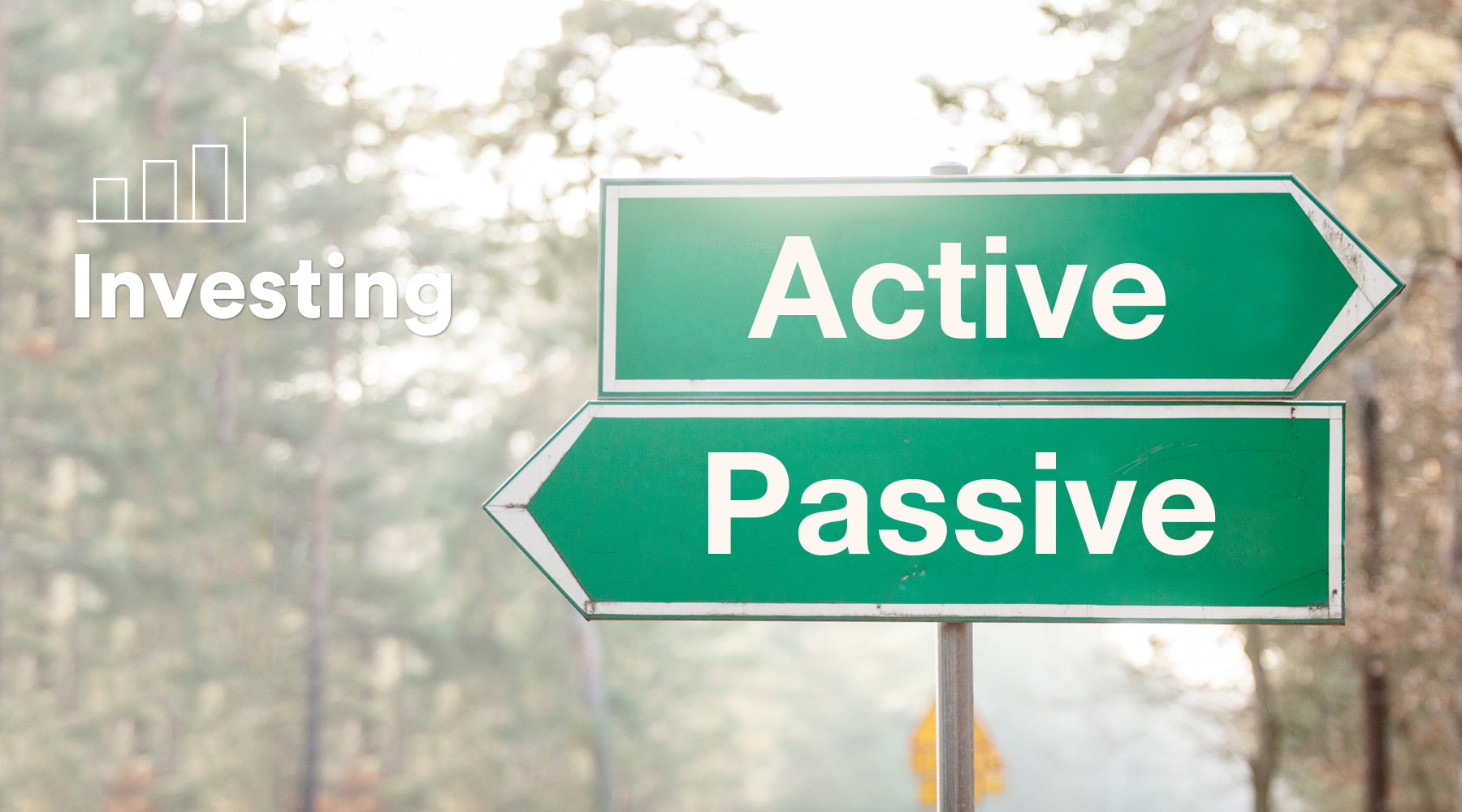Investment decisions demand thorough investigation and analysis to guarantee that one’s portfolio contains the ideal mix of investments. When managing or making investments in a portfolio, the most common approaches are active vs passive investment, with each participant arguing that their system is superior. Their comparison continues to be one of the most polarizing topics in the world of investing, whether one agrees with them.
Active Investment
In layman’s terms, investment is actively made to outperform the market index and profit from short-term market swings to provide the highest returns to investors, i.e., more than the standard returns, through a comprehensive understanding of markets.
Investments that are actively managed include hedge funds and a stock portfolio that the investor manages through an online brokerage account.
There are two categories of active investment strategies:
- In investing in actively managed funds, the fund managers make all the decisions (such as mutual funds).
- Self-investment based on in-depth market investigation and evaluation.

Pros and Cons of Active Investment
Pros:
- Potential to outperform the index by trading more options.
- Possibility of using hedge funds to reduce the risk.
- The potential for an early exit if the stocks don’t do well.
- The capacity to decide on stock management.
- Better tax administration by getting rid of underperforming assets.
Cons:
- Bets on high-performing indexes may cause the index to underperform.
- High transaction fees associated with active asset acquisition make it generally expensive.
- Because they must pay high annual taxes on their net gains, active managers are typically less tax efficient.
- High-risk investments can make you rich or a pauper.
- Because it demands a significant level of skill and knowledge of wealth management, even a minor detail can cost a loss.
Passive Investment
The goal of passive investment, a long-term investment strategy, is to duplicate and match the performance of index funds. Passive investors limit the amount of buying and selling within their portfolios because there is no pressure to outperform the market and produce higher returns.
This makes it a cost-effective investment with modest retention, flexible asset allocation, well-defined investment outlooks, and a longer-term goal in mind, such as retirement plans.
Exchange Trading Funds (ETFs) and index funds are two examples of passive investments.

Pros and Cons of Passive Investment
Pros:
- Minimal transaction costs as the investment team have a limited impact on stock selection and timing of investments.
- Generates consistent average returns as it involves investing in long-performing indexes.
- Transparency in investing and ease of using and understanding an index as it’s obvious which assets are in an index fund.
- Tax efficiency, as the buy-and-hold strategy, typically results in a low tax bill on the funds each year.
- The benchmark indices are diversified as they are created to represent the entire market.
Cons:
- They are confined to a specific index or placement setting of investments with little variation, so investors are locked in regardless of market conditions.
- Fund managers make most decisions, so you have less control.
- Since their core assets are fixed to track the market, potential returns are reduced.
- Managers cannot respond to market changes because they are locked of their passively managed funds.
Things to keep in mind while choosing Active vs Passive Investments
- Depending on appetite, a person may choose to invest in a low-yielding index fund or a high-risk hedge fund, which both the fund manager and the investor must actively manage.
- Making an informed investment decision can be aided by considering the past performance of the funds.
- The budget has a say as active calls for betting on large portfolios for quick gains, whereas passive directly affects low-cost schemes to run a little longer.
- Control over the investment can only be considered valid when someone thoroughly understands the markets, which implies active investment. A beginner needs to trust the passive investment framework.
- Investment choices are influenced by transparency and diversification because active investments need more clarity than passive investments despite providing excellent fund diversification.

Differences
| Parameters | Active Investment | Passive Investment |
| Strategy | Manager makes changes at his discretion. | Copy the movement of benchmark index. |
| Active | Active involvement of the fund manager. | Not required. |
| Expense Ratio | The expense ratio is higher. | Lower. |
| Return | High | Moderate |
| Risk | High-risk high return. | Low risk, low return. |
| Tax | More gain results in high tax per annum. | Less gain results in less tax per annum. |
Conclusion – What to pick?
Characteristics serve as the basis for separating active investments from passive ones. Additionally, the investors’ profile, risk tolerance, timeline, and objectives influence it. A combination of actively managed and passively managed funds in one’s investment portfolio might be the best choice to produce the highest returns and cost-effective investment.
Because active fund managers find it difficult to outperform key indices during bull markets, passive investments generally perform better. Active investing, however, frequently excels during bear markets because it gives investors a wider selection of options.





